Cost: $200/session payable online before each session.
Refund requests must be sent by email at administration@junginla.org before Friday, 12:00 pm prior to the program being paid for. No refund will be issued otherwise. The last session will be free for attendees who participate in the first 9 sessions.
Application:
To apply, please complete the following Application Form.
Jungian Psychology in Clinical Practice
September 2024 – June 2025
The C.G. Jung Institute of Los Angeles offers a Certificate Program for licensed mental health professionals, which extends over a ten-month period beginning in September 2024 and ending in June 2025. It is structured around seminar courses which will meet monthly, on Saturdays, from 9:00 am to 4:00 pm. Each day will focus on a current topic in Analytical Psychology.
The morning session from 9:00 am to 1:00 pm will begin with a theoretical presentation, followed by case material and a time for discussion. Following a lunch break, the afternoon session from 2:00 pm to 4:00 pm will be devoted to case consultation in smaller groups. It will provide an opportunity for discussion and integration of theoretical and clinical material.
The class is intended for licensed mental health professionals, including Psychologists, Clinical Social Workers, and Marriage and Family Therapists. It will be held online using Zoom.
Certificate: A Certificate will be awarded to participants after completion of the program. Participants may miss 2 classes and still receive the certificate.
Continuing Education:
Psychologists/MFTs/LCSWs/MFCCs: The C.G. Jung Institute of Los Angeles is approved by the American Psychological Association to sponsor continuing education for Psychologists. The C.G. Jung Institute of Los Angeles maintains responsibility for this program and its content.
Nurses: The C.G. Jung Institute of Los Angeles is an accredited provider approved by the California Board of Registered Nursing (Provider #07986).
A maximum of 60 CE credits can be earned based on class attendance.
Saturday, September 21, 2024
Jung in Context
Presented by Stephen Kenneally, M.A., M.B.A., M.F.T.
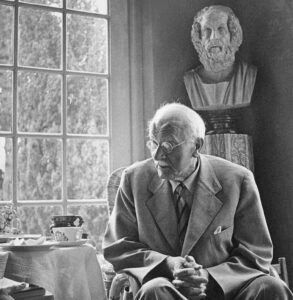
Learning Objectives:
- Describe the role of the complexes in the development of Jung’s theory of analytical psychology.
- Describe key similarities and differences between the Jungian vs. the Freudian view of the unconscious.
- Describe the difference between the personal and the collective unconscious.
- Describe how Jung’s theory resonates with current research in neurobiology.
Stephen Kenneally, M.A., M.B.A., M.F.T. is a Jungian analyst in private practice in Santa Monica, CA. He is active in the training at the C.G. Jung Institute of Los Angeles and has taught for over ten years at Antioch University. Stephen has also worked at an experiential retreat center, and prior to that, worked in finance in New York City.
Saturday, October 5, 2024
The Dynamism of Shadow and Complexes
Presented by Paula Smith-Marder, Ph.D.

Learning Objectives:
- Describe what Jung meant by shadow.
- Describe a complex including its archetypal core.
- Give a clinical example of what it means to be caught in a complex.
- Describe the difference between the positive and the negative shadow.
Paula Smith-Marder, Ph.D. is a clinical psychologist and certified Jungian analyst with a private practice in Pacific Palisades. She is a past Director of Training at the C.G. Jung Institute of Los Angeles. She teaches and supervises at the Jung Institute, she taught at Alliant University, and for ten years she was a psychologist consultant to The Women’s Life Center at UCLA. Her interests include oil painting, piano, and animal dreams.
Saturday, November 9, 2024
Archetypes and their Use in Clinical Practice
Presented by J. Gordon Nelson, Ph.D.
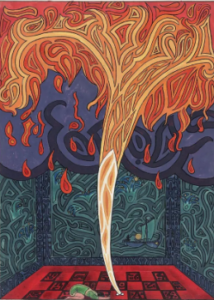
Learning Objectives:
- Describe what is meant by the term individuation and why this archetype is a crucial part of the analytic process.
- Identify a complex with its archetypal core, and instinctual energy.
- Describe how to differentiate between an ego identification, a complex, and an archetype.
- Describe what is meant by the unconscious aspect of the personality and how an instinct can interfere with our capacity to tolerate conflict.
- Give an example of how dream analysis can support the process of individuation.
- Describe one way a person might know he or she is caught in a complex; Give an example of how an archetype can manifest in a dream.
Gordon Nelson, Ph.D., is a Jungian analyst and educational psychologist in Santa Monica. He has taught the complete C. G. Jung Collected Works Reading Program many times, as well as many individual training courses on Jung at the C.G. Jung Institute of Los Angeles, and at other professional psychology graduate schools. He is a past president of the C.G. Jung Institute of Los Angeles and former Chair of its Certifying Board for new analysts.
Saturday, December 14, 2024
Myths, Fairy Tales and Parables: Their Practical Application in the Consultation Room
Presented by Sheila Traviss, M.A., L.M.F.T.
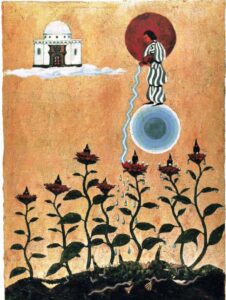
Learning objectives:
- Apply story elements of a fairy tale to the structure of the psyche.
- Identify the meaning of a complex by way of a myth.
- Identify the tension of opposites contained within a parable.
- Identify how a complex is generative to the psyche.
Sheila Traviss, LMFT, is a Jungian Analyst in private practice in Los Angeles. She leads groups of writers interested in diving into the depths of psyche by way of psychological prompts. She has taught exploring psyche by way of Film at both the Los Angeles and New York Jung Institutes. She loves to share her love of stories and exploring their psychological meanings contained within the words.
Saturday, January 11, 2025
Dreams in Clinical Practice
Presented by Lumi Docan, M.F.T.
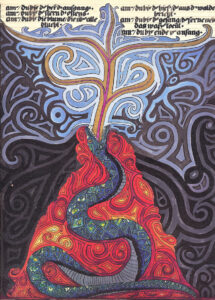
Learning objectives:
- Describe 3 key concepts in Jungian dream analysis.
- Give an example of a transference dream.
- Describe what is meant by a compensatory dream and give an example.
- Describe what is meant by active imagination and how Jung used it to help patients work with their dream material.
Lumi Docan, M.F.T., is a Jungian analyst in clinical practice in Studio City, where she works with adults, couples, and children. She began her professional career as a journalist, covering international conflicts as a war correspondent. Her primary areas of interest include the study of dreams and alchemy, immigration, the path to individuation, and what brings healing in analysis. She recently presented her paper “The Silent Other as an Expression of Soul” at the North-South Conference in Santa Cruz.
Saturday, February 8, 2025
Transference and countertransference
Presented by Susan Frankel, Ph.D.
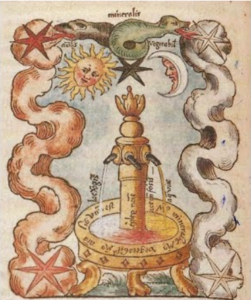
Learning objectives:
- Give an example of Jung’s contradictory remarks regarding transference and countertransference.
- Describe central differences between Jung’s and Freud’s position on the role of transference in treatment.
- Describe the evolution of the concept of transference as described by the post-Jungians.
- Give an example of similarities and differences between a Freudian and Jungian focus on transference in contemporary clinical practice.
Susan Frankel, J.D., Ph.D., is a Jungian analyst in practice in Century City. She practiced law for seven years before returning to graduate school in psychology. Her interests include working with trauma, infant observation, and intersubjective transference/countertransference. She has lectured both locally and nationally on the use of infant observation with adult patients.
Saturday, March 8, 2025
The Great Work of Alchemy: A Journey of Transformation
Presented by Gita Morena, Ph.D., L.M.F.T.
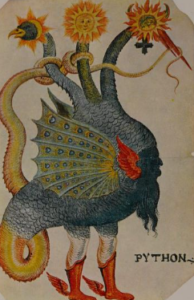
Learning objectives:
- Describe the key concepts of alchemy.
- Describe the nature of alchemical operations.
- Identify the psychological aspects of alchemical processes.
- Explain how alchemy relates to the individuation process.
Gita Morena, Ph.D., L.M.F.T., is a certified Jungian analyst, an STA/ISST sandplay therapist-teacher, and a research editor for the Journal of Sandplay Therapy. She has led trainings and seminars worldwide and published numerous articles about sandplay therapy. Her book, The Wisdom of Oz: Reflections of a Jungian Sandplay Psychotherapist, explores her great grandfather’s story, The Wonderful Wizard of Oz, as a tale of psychological individuation and spiritual awakening. She is particularly interested in the mind-body-spirit connection and incorporates a Buddhist perspective to address core psychological and emotional healing issues. Dr. Morena works in Santa Monica, California, and offers in-person and remote sessions for Jungian analysis, sandplay process, and case consultation.
Saturday, April 5, 2025
Somatic Practice in Jungian Psychotherapy
Presented by Celeste Ryan, Ph.D.
This presentation will introduce the integration of somatic practices into Jungian psychotherapy, focusing on the archetypal material of the collective unconscious and working with complexes. We will cover Jung’s view that the archetypes reside within the body in the “autonomous functional systems.” Drawing from clinical material, will utilize tools from Somatic Experiencing (resonance, titration, and pendulation) and the parallels that arise in the interactive field in the context of analytic work. We will also explore the Somatic Experiencing use of SIBAM (sensation, image, behavior, affect and meaning) and its correlation with Jungian typology (a brief overview). Through case material we will look at how the unconscious emerges through bodily symptoms.
Learning objectives:
- Describe Jung’s view of how bodily symptoms and image relate to each other.
- Apply the Somatic Experiencing tool of SIBAM (sensation, image, behavior, affect and meaning) to Jungian typology in clinical work.
- Describe the interactive field as it relates to Somatic Experiencing tools of resonance, titration and pendulation.
- Discuss Jung’s concept of the subtle body as the somatic unconscious.
Celeste Ryan. Ph.D., is a licensed clinical psychologist and Jungian analyst practicing in South Los Angeles, serving a diverse community. Her work is an interweaving of Jungian analysis, Somatic Experiencing, and, at times, NeuroAffective touch. Her work is tailored individually to a person’s needs to support their capacity to live and develop a sense of wholeness and meaning in their lives. When she is not working in her private practice, she enjoys hiking with her husband and their dog in the foothills of Los Angeles, and native plant gardening.
Saturday, May 10, 2025
Working with Children Through a Jungian Lens
Presented by Elizabeth Schofield-Bickford, M.A., L.M.F.T.

Learning Objectives:
- Discuss the symbolic underpinnings of working with children.
- Describe methods used in working with children from a Jungian perspective.
- Identify themes that are often woven through a child’s process.
- Discuss working with transference, countertransference, and parents.
Elizabeth Schofield-Bickford, LMFT, CST, is a certified Child and Adult Jungian Analyst member of the C.G. Jung Institute of Los Angeles and a Certified Sandplay Therapist STA/ISST. She is Director of the Hilde Kirsch Children’s Center at the Jung Institute in Los Angeles and co-director of the ARAS Teen LA Summer Program. She teaches at the LA Institute in the analyst training program and in the 2-Year Sandplay Course. She is co-organizing the First North American Conference on Infancy, Childhood and Adolescence. This will be a hybrid event to held at the San Francisco Jung Institute in April 2025 and will be co-sponsored by the Los Angeles and San Francisco Jung Institutes. In 2022, she taught Working with Children as part of the Institute’s Certificate Program for Clinicians, and is happy to be doing so again this year. Her article Dying to be An Analyst was published in Psychological Perspectives in 2020. She has a private practice in Santa Monica where she works with children and adults.
Saturday, June 14, 2025
Active Imagination
Presented by Marion Anderson, Ph.D.

Jung developed the tool of active imagination as a means of helping patients contact and work with their unconscious material through mediums such as writing, drawing, painting, and movement. In this way, patients were encouraged to develop active communication between their ego and the unconscious through symbolic expression. We will examine the history and roots of this practice and illustrate how this technique can be utilized in clinical practice. Jung emphasized that clients could only go as far as their therapists have reached in their own personal experience with this method. If time allows, participants can experience working with this technique directly.
Learning Objectives:
- Describe what is meant by active imagination, contrasting it with imaginative techniques.
- Describe how Jung used active imagination with his patients.
- Give an example of when it would be therapeutically appropriate to incorporate active imagination in the course of treatment.
- Give an example of when utilizing active imagination would be counter-indicated.
- Describe how bringing unconscious images into consciousness can be used to strengthen ego development.
- Describe 4 forms of active imagination in clinical practice.
Marion Anderson, Ph.D., is a clinical psychologist and Jungian analyst (IAAP) at the C.G. Jung Institute of Los Angeles where she teaches in the analytic training program. She works in person and online in her private practice in Santa Monica with adults who suffer from anxiety, depression, trauma, cultural adaptation, and major life transitions. Dr. Anderson is a certified sandplay therapist and teacher (STA/ISST) and a founding member of the Brazilian Sandplay Society IBTsandplay. She is certified in the Jungian method of Painting Inner Images (Maltherapie) in Germany and offers workshops in this modality. She presented and published nationally and internationally and speaks German, English, and Portuguese.
Learning Objectives for Case Consultation:
Describe the transference/countertransference field and how it manifests in the consulting room;
- Identify how complexes are manifested in projection;
- Describe what is meant by an analytic or symbolic attitude towards the unconscious;
- Explain how Jungian analysis is different from other analytic schools of thought;
- Describe what is meant by the role of symbol formation in analysis, what contributes and what inhibits this process;
- Describe what is meant by the ego-Self axis and give an example from clinical practice;
- Describe what is meant by a complex and give an example from clinical practice;
- Describe what is meant by the personal shadow, and give an example from clinical practice;
- Describe what is meant by the collective shadow, and give an example;
- Describe what is meant by the Anima and give an example from clinical practice;
- Describe what is meant by Animus and give a clinical example;
- Describe what is meant by an archetype, and give an example from clinical practice;
- Describe what is meant by a complex having an archetypal core;
- Describe how to use imagery from a myth or fairy tale as a means of amplifying a psychological experience;
- Explain how typology affects the development of the personality using a clinical example;
- Describe what is meant by projection and give an example from clinical practice;
- Describe active imagination and how to work with it in clinical practice;
- Describe the difference between ego versus Self perspective in dream interpretation;
- Discuss the difference between a reductive vs an amplification approach to working with dreams;
- Give an example of how the transference can manifest in a patient’s dream;
- Give an example of how an archetypal theme manifests in dreams;
- Describe the role of transference in the analytic process;
- Describe the role of countertransference in the analytic process;
- Describe the personal and archetypal aspects of the transference;
- Describe how the therapist’s typology can affect one’s work with patients using a clinical example.
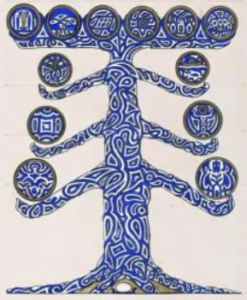
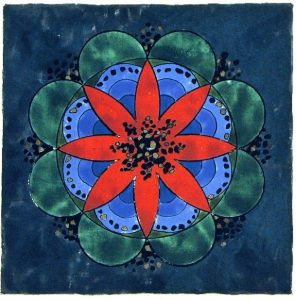
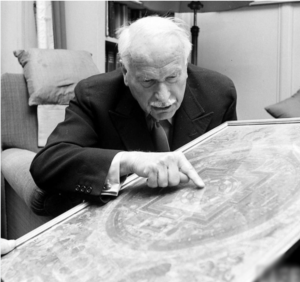 Describe the transference/countertransference field and how it manifests in the consulting room;
Describe the transference/countertransference field and how it manifests in the consulting room;